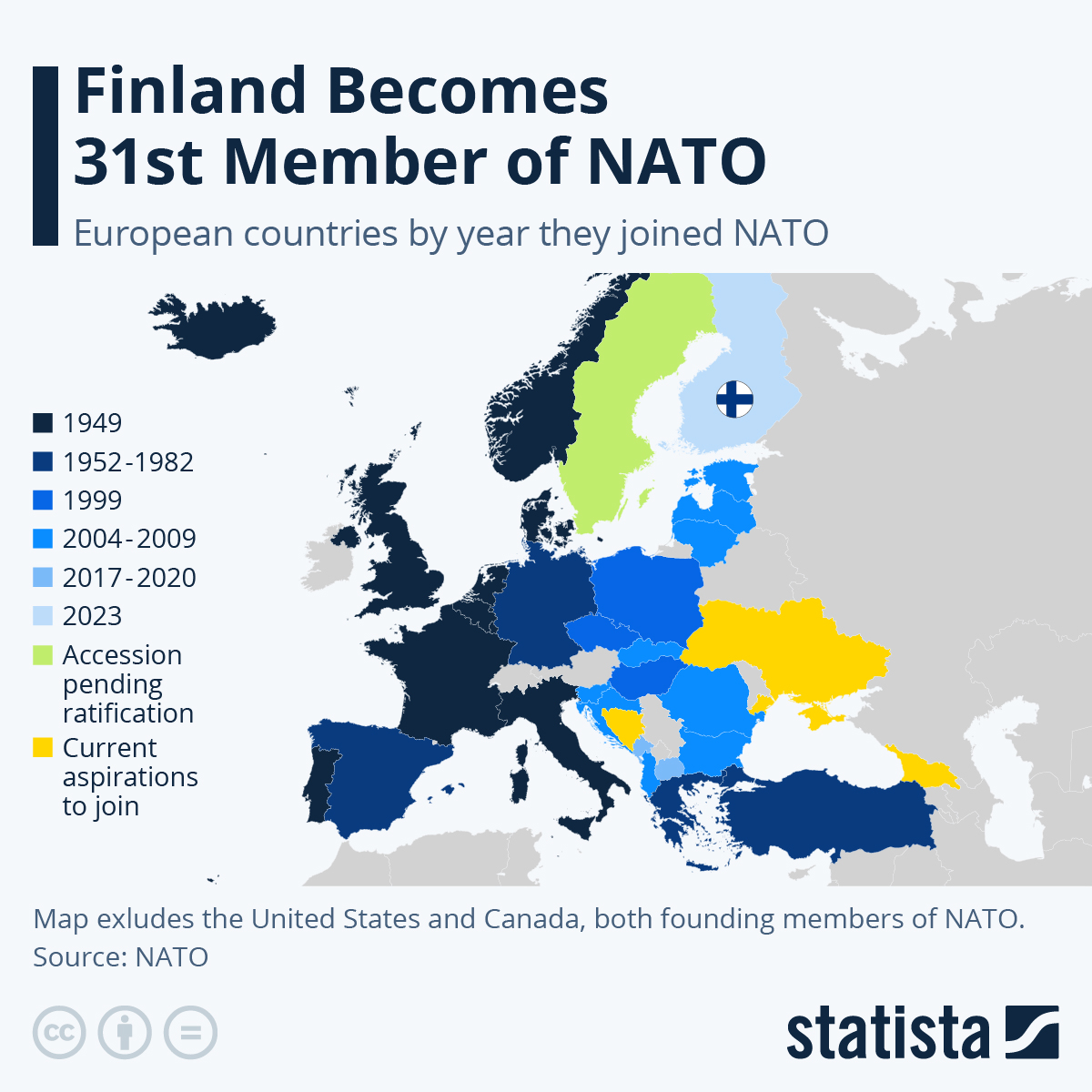NATO, a transatlantic security alliance comprising 31 member countries, is bolstering its military deterrent in Europe in response to Russia’s invasion of Ukraine. The alliance, established during the Cold War, has expanded its operations beyond Europe and has conducted security missions in countries like Afghanistan, Iraq, Kosovo, and Somalia. In the wake of Russia’s aggression, NATO allies are providing Ukraine with substantial military support, and Finland has joined the alliance.
NATO, established in 1949 as a defence against Soviet aggression, remains a crucial pillar of military cooperation between the United States and Europe. Since the end of the Cold War, an increasing number of NATO allies have taken on various missions beyond the Euro-Atlantic region, including countries like Afghanistan and Libya.
Russia’s unprovoked invasion of Ukraine in 2022 has disrupted Europe’s security architecture and prompted NATO members to reassess their foreign policies and defence commitments. This crisis has created the most significant tensions within the alliance since the end of the Cold War and has led to increased defence spending and calls for membership from countries like Finland and Sweden. Finland officially joined NATO in April 2023.
Expanding NATO’s Membership
Following the Soviet Union’s collapse in 1991, the direction of NATO was a subject of intense debate among Western leaders. Some members of the Bill Clinton administration were initially hesitant about expanding NATO due to concerns about strained relations with Russia and potential complications in other foreign policy objectives. However, others saw expansion as an opportunity to extend NATO’s security umbrella to Eastern Europe and consolidate democratic gains in the former Soviet bloc.
The issue of NATO expansion also divided European members. The United Kingdom was worried that expansion would dilute the alliance’s effectiveness, while France believed it would give the United States too much influence. France aimed to integrate former Soviet states through European institutions. To address these concerns, Clinton introduced a new initiative called the Partnership for Peace (PfP) in 1994. The PfP was open to former Warsaw Pact members and non-European countries and aimed to allay Russia’s concerns about NATO expansion. Several countries, including Georgia, Russia, and Ukraine, joined the PfP in the following months.

Beyond Collective Defense
As the security environment changed after the Cold War, many U.S. officials believed that NATO needed to address security challenges beyond its traditional defence commitments. The breakup of Yugoslavia and the ethnic conflicts that ensued tested the alliance’s willingness to confront challenges outside its borders. NATO’s intervention in Bosnia and Herzegovina, including combat operations against Bosnian Serb forces in 1994, marked a significant shift in the alliance’s role.
NATO’s Structure and Operations
NATO operates as a consensus-based alliance headquartered in Brussels, where decisions must be unanimous. However, individual states or subgroups of allies can take action outside NATO’s auspices. For example, the United States, France, and the United Kingdom initiated a UN-sanctioned no-fly zone in Libya in 2011 before transferring command to NATO.
The alliance has two strategic commands: the Supreme Headquarters Allied Powers Europe in Belgium and the Allied Command Transformation in Virginia, United States. The supreme allied commander in Europe oversees all NATO military operations and is always a U.S. flag or general officer. NATO members are not obligated to participate in every operation, and their forces remain under national authorities until NATO operations begin.
Financial contributions from member states cover the cost of deploying their armed forces for NATO-led operations. NATO’s formal budget funds alliance infrastructure, while member states’ defence spending is separate. NATO members have committed to spending 2 per cent of their annual GDP on defence by 2024, and only a few had met this threshold in 2022.
Tensions With Russia and Ukraine’s Role
NATO’s expansion into Central and Eastern Europe has been viewed with concern by Russia. Moscow sees it as a betrayal of alleged U.S. promises not to expand eastward after Germany’s reunification in 1990. Tensions escalated with Russia’s annexation of Crimea in 2014 and its destabilization of eastern Ukraine. NATO suspended cooperation with Russia following these events.
Russia’s aggressive actions in Ukraine have prompted NATO to reinforce its defences on the alliance’s eastern flank. Military exercises have been increased, and new command centres have been established in various Eastern European countries. NATO has also provided military support to Ukraine, although as a non-member, it remains outside NATO’s defence perimeter.
NATO is responding to Russia’s invasion of Ukraine by strengthening its military deterrent in Europe and expanding its membership to include Finland. The alliance, formed initially to counter Soviet aggression, has expanded its operations beyond Europe and faced challenges in the post-Cold War era. While tensions with Russia persist, NATO remains a vital defence alliance ensuring security and cooperation among member states.












